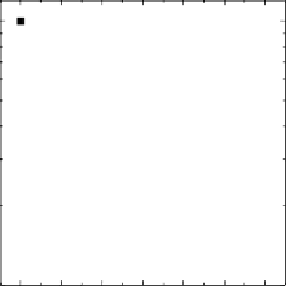Environmental Engineering Reference
In-Depth Information
Since the process of protein synthesis is affected by a large number of factors,
such as light, temperature and water content, changes in environmental conditions can
significantly affect the protein repair capacity and in turn the UV-B sensitivity of
photosynthetic organisms. An interesting example will be discussed below regarding the
role of visible light in the regulation of protein repair.
The role of visible light in PSII repair
The visible component of sunlight light in itself can damage the photosynthetic
apparatus, but it can also modify the redox state of UV targets as well as activate and
regulate protein repair
26,35
. In order to clarify the role of visible light in UV-induced damage
and repair of PSII,
Synechocystis
6803 cells were exposed to UV-B and visible light in
separate and simultaneous illumination protocols. The inactivation curves give straight lines
on a semilogarithmic plot (Figure 8) indicating that damage of single molecular
1
1
With lincomycin
Without lincomycin
0.1
0.1
0
20
40
60
80
100
120
0
20
40
60
80
100
120
Illumination time (min)
Illumination time (min)
Figure 8.
The interaction of visible and UV-B light during PSII damage.
Cell suspension of the
cyanobacterium
Synechocystis
6803 was illuminated with visible light (squares), UV-B light (circles) and
by the simultaneous application of the two spectral regions (up triangles). The experiments were
performed without addition (right panel) and in the presence of the protein synthesis inhibitor lincomycin
(left panel). The damage curves calculated by using the assumption that UV-B and visible light damages
PSII via independent mechanisms are also shown (down triangles).
targets are responsible for the loss of PSII activity. When the repair of damaged PSII
centers was prevented by protein synthesis inhibitor, the damage induced by UV radiation
was enhanced by the presence of visible light. This enhancement could arise either from
independent damage of PSII by the two spectral regions or from a synergistic interaction. In
order to distinguish between these possibilities, we simulated the damage curves for the
simultaneous illumination protocol using the assumption that UV-B and visible light
inactivates PSII by independent mechanisms. The good correlation of the calculated and
measured inactivation curves (Figure 8, left panel, Table I.) supports that UV-B and visible
light damages PSII by independent mechanisms without synergistic interaction. However,







































Search WWH ::

Custom Search